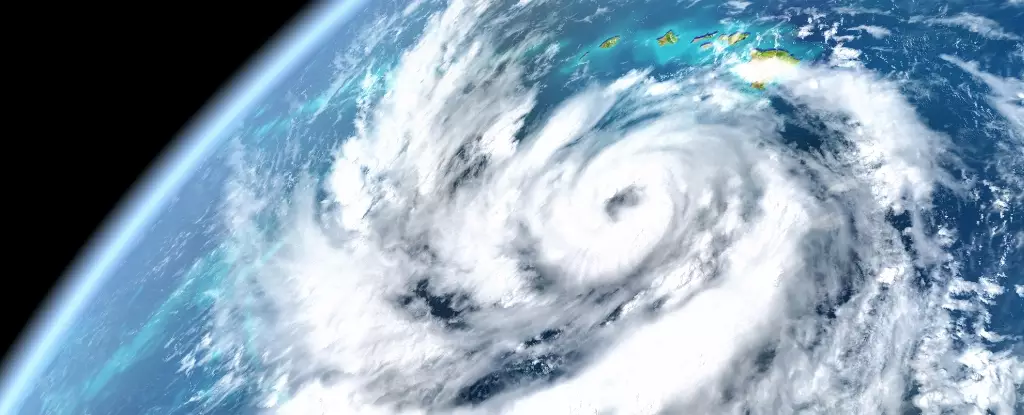The introduction of Microsoft’s AI model, Aurora, has ignited discussions in both scientific and environmental spheres about the future of weather forecasting. This groundbreaking technology is positioned as a significant leap beyond traditional methodologies, which have long dominated the industry. With its ability to generate detailed forecasts and accurately predict the trajectory of hurricanes, Aurora may serve as a turning point in how meteorologists predict severe weather, thereby addressing increasingly volatile climatic conditions.
The vast implications of Aurora’s success are deeply interconnected with our urgent need for more precise forecasting. As climate change accelerates, weather anomalies are becoming more common, demanding a swift adaptation from meteorological organizations worldwide. The reliance on historical data as the backbone of Aurora’s predictions, while innovative, raises questions about the stability and accuracy of past patterns in our rapidly changing environment. While many hail Aurora as a revolutionary tool, it is imperative to maintain a critical lens regarding its limitations as well as its impressive achievements.
Efficiency and Cost: The Practical Advantages
One particularly compelling aspect of the Aurora model is its significantly reduced computational cost. Traditional forecasting methods often require extensive computing resources, rendering them expensive and inaccessible for smaller agencies. Aurora, on the other hand, provides an economical alternative. This affordability is crucial, especially for developing countries that struggle to access state-of-the-art technology for weather prediction. The democratization of predictive modeling courtesy of AI could empower local institutions to better manage disaster preparedness, potentially saving lives.
However, as we marvel at the benefits of cost efficiency, it’s essential to consider the ethics of technology deployment. Can we trust an AI that relies strictly on historical data when climate patterns are shifting unpredictably? This creates a dichotomy between affordability and reliability. If we lean too heavily on AI-based forecasts, we risk underestimating the profound impacts of rapid climate change that might not be accurately captured in historical data. Thus, we must remain vigilant as we explore this new frontier.
Cautionary Perspectives: Not All That Glitters is Gold
The excitement surrounding Aurora ought to be matched with a level of skepticism. While Aurora claims to outperform traditional systems, the sheer reliance on historical data could result in oversight of unprecedented climatological variables. Hurricanes and typhoons can morph drastically due to various factors—ocean temperatures, air pressure, and even human influence on the climate. The argument for an AI model that solely learns from the past seems shortsighted in an era where new variables seem to evolve daily.
Earlier predictions using other advanced models, such as those offered by Google and Huawei, have also demonstrated high accuracy rates. This creates an environment of competition among tech companies and governmental institutions, sparking a race that may bypass essential scrutiny of the underlying methodologies. As we rush to embrace AI solutions, we must grapple with the inherent uncertainties surrounding their capabilities and the ramifications of relying predominantly on machine learning.
Future of Meteorology: A Collaborative Approach
The spirit of collaboration among prominent weather agencies speaks volumes about the potential future of meteorology in the age of AI. Instead of positioning AI as a standalone solution, a hybrid approach that melds advanced technology with traditional methodologies could prove most effective. Organizations like Meteo-France, which are simultaneously developing their own models alongside legacy systems, hint at a balanced trajectory forward.
As weather forecasting eclipses traditional practices through AI innovations, the scope for human and machine collaboration emerges. Hurricane forecasting is but one ground where AI can help shape a safer, more prepared world. It represents an opportunity to redefine not only how we predict but also how we respond to the implications of climate change and extreme weather phenomena. The crux lies not just in the models themselves but in how we integrate them into existing frameworks for maximum efficacy.
Ultimately, while Aurora sparks optimism for the future of weather forecasting, it requires a nuanced and thoughtful consideration of how machine-based systems can be responsibly harnessed. The transition into a world where AI drives meteorological predictions must be informed by awareness of the significance of adaptive and comprehensive forecasting systems that respect historical contexts while boldly facing the uncertainties of the future.


Leave a Reply